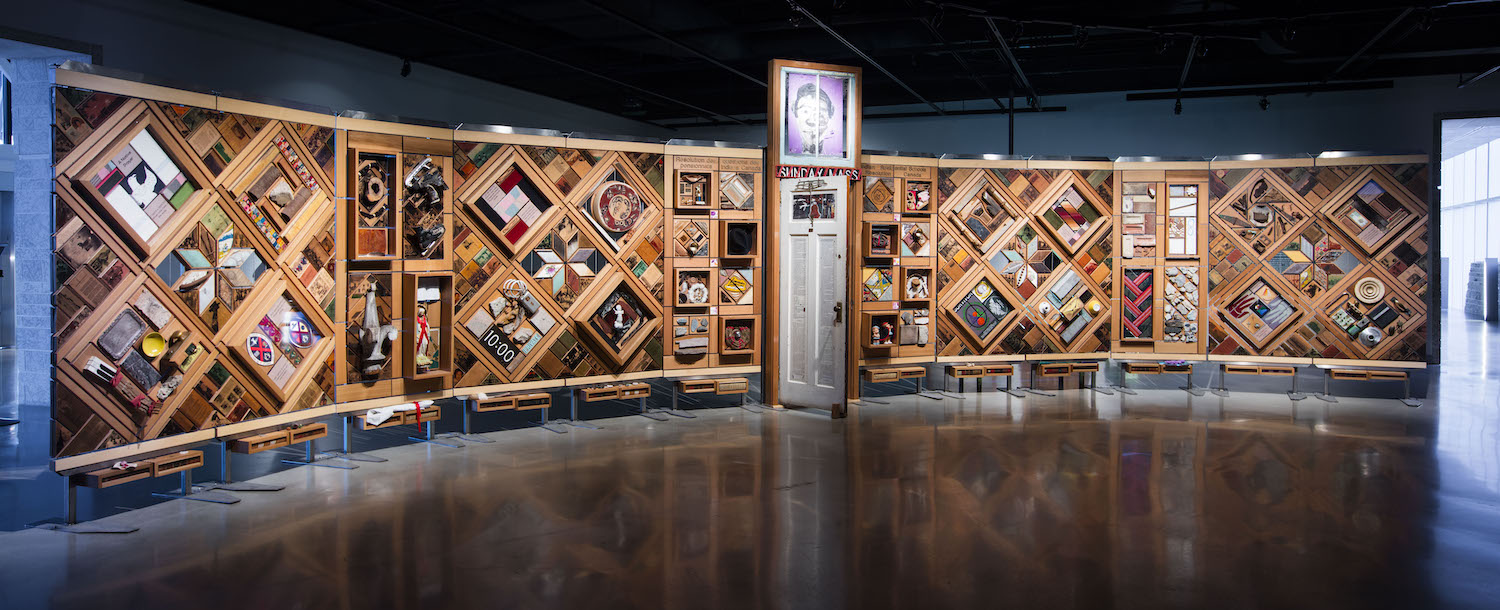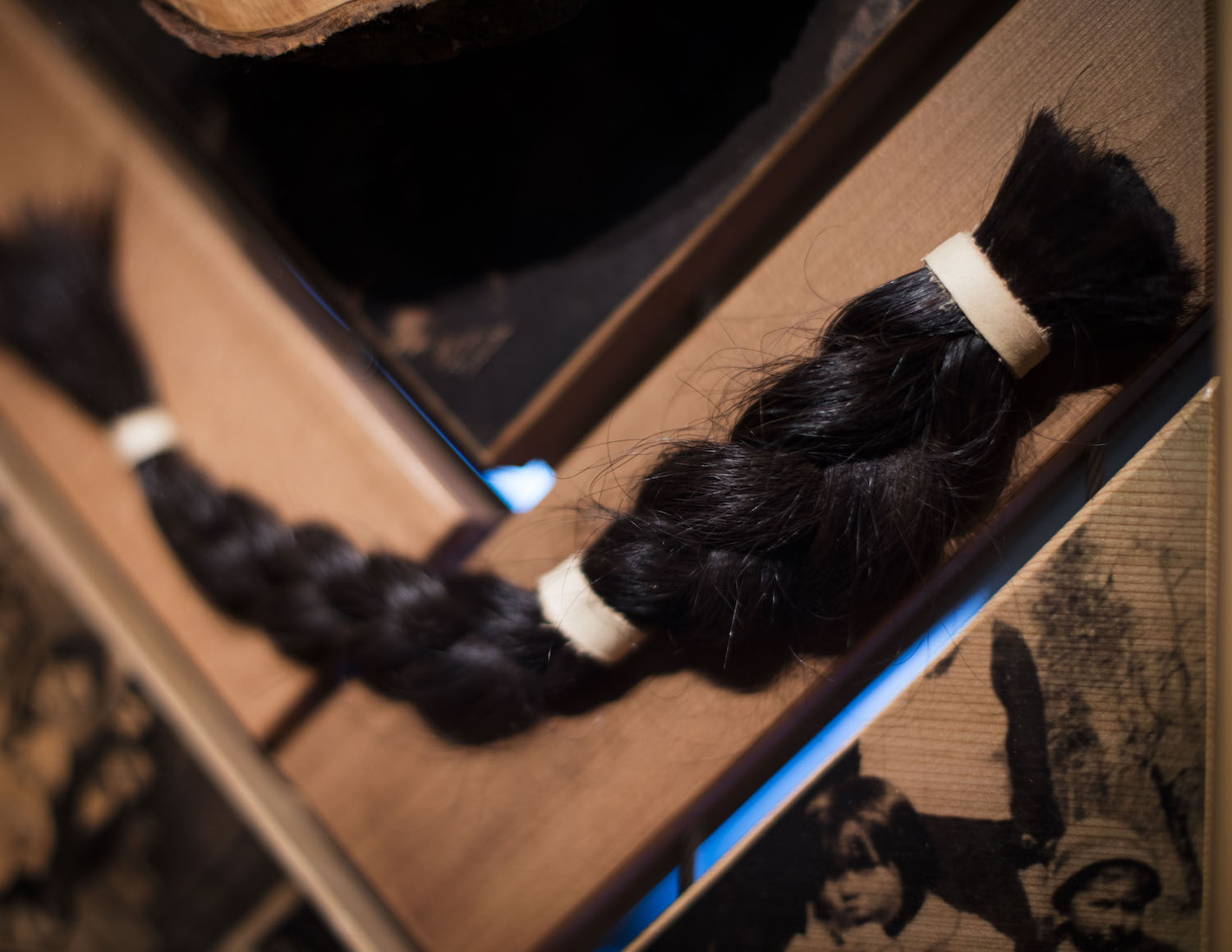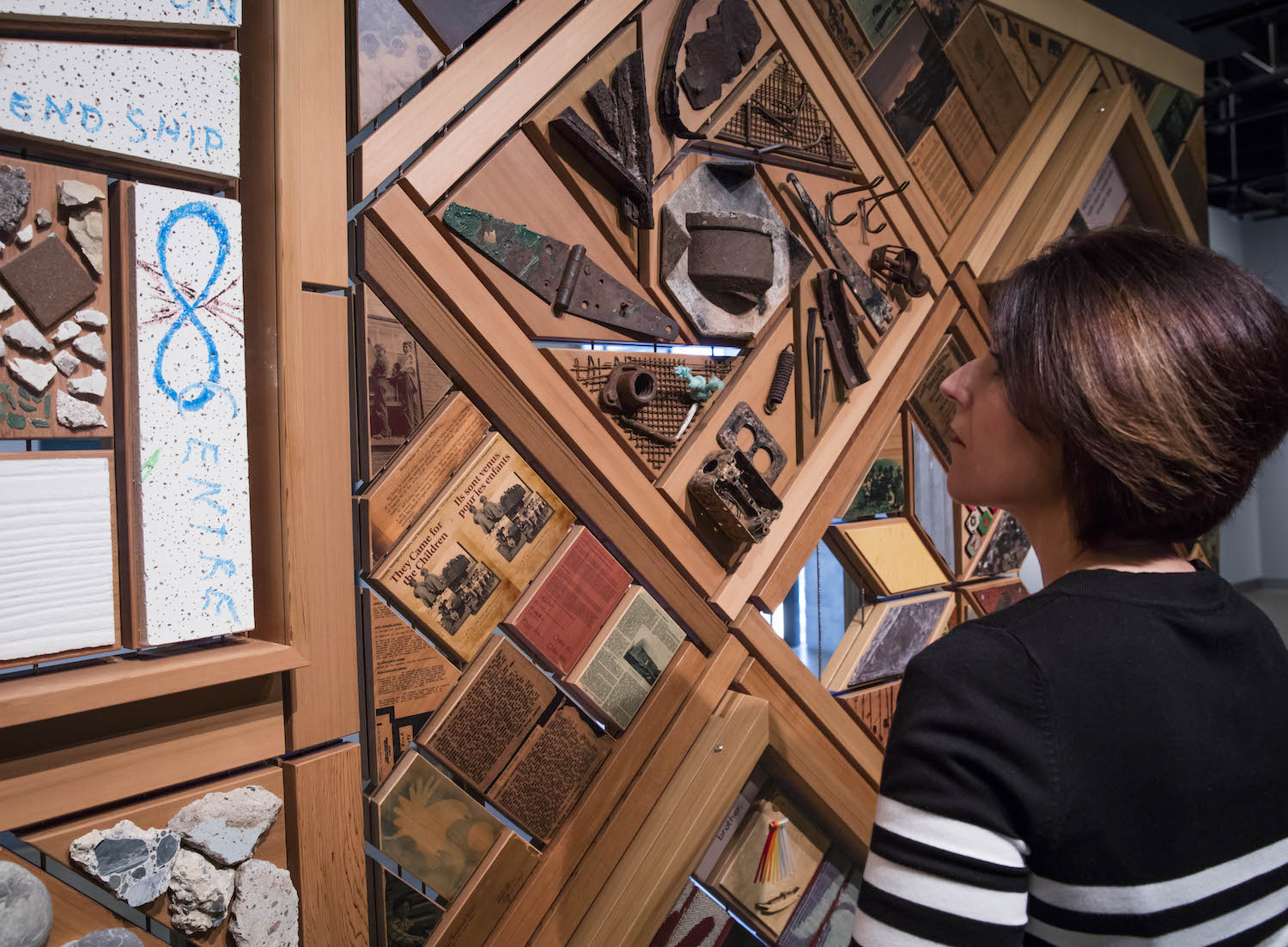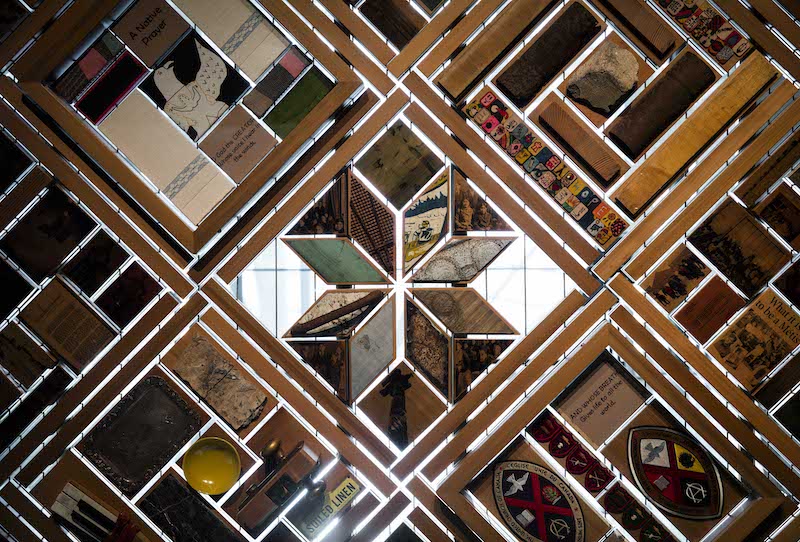The Witness Blanket weaves together hundreds of donated artifacts — photographs, moccasins, hockey skates, straps used to discipline students, pieces of the buildings, even hair — to tell the story of residential schools.
The work is alive, says Kwakwaka'wakw artist Carey Newman (Ha-yalth-kingeme). It has a spirit.
So when the Canadian Museum for Human Rights wanted to acquire the powerful piece, Newman rejected the usual contract transferring ownership to the museum and ending his relationship with the Witness Blanket.
He thought about the work, and the people who shared their experiences by providing artifacts. He thought a lot about treaties and the hard lessons First Nations had learned from them. He wrote and rewrote draft agreements.
And he created a document that recognizes the artwork as something with a spirit, because of all the memories it contains. Instead of providing the finality of a typical contract, it creates a fluid, permanent relationship between the two parties — or three, counting the Witness Blanket — one that involves revisiting the terms every few years and talking about how to move forward together.
The agreement is more about forging relationships than handing over ownership of something, said Newman. And it reflects the original intent of First Nations in reaching treaties.
“Indigenous people know and have been stung many times by agreements that seem to be one thing and turned out to be something different,” he said.
“When it was leading up to the last couple of days, and I was reading and rereading the contract, and fixing and changing little bits here and there, we added a clause or a little part where it says this is a ‘living document’ and that the needs are going to change over time. And that we can adapt and update the terms of the agreement through mutual written agreement,” Newman said.
The Witness Blanket is important because it’s not just a material object, he said. Newman and his team spent 18 months gathering 880 items as they worked on the project, selecting 250 that made it onto the final piece. The work has been exhibited across Canada.
The stories told by people who contributed items carry their own power, and so do the items. Newman, from Vancouver Island, likens it to Kwakwaka'wakw traditions. Ceremonial masks, for example, are treated with the utmost respect because they are believed to be their ancestors.

Treaties, art and contracts
Newman’s agreement brings an Indigenous lens to the relationship between artist, work and museum, and in the process overturns the traditional non-Indigenous model.
He doesn’t put it on the same level as treaties. It’s about an art installation, not land, laws and nations.
But treaties played a large role as Newman thought about the relationship between the museum, the work and himself.
First Nations considered treaties living documents setting out the principles and spirit that would guide the nations and the Crown as they worked together. Instead, governments treated treaties as final agreements, and ignored them entirely when it suited them. (The Ontario Superior Court sided with First Nations in a December ruling on treaty terms that found they were intended to be living documents and revised as circumstances change. The provincial government is appealing.)

Newman decided he wanted to create a living document acknowledging the parties will work together to honour the spirit of the agreement.
“It is a different way, and it seems like a new way, but it’s really not,” he said. That’s how First Nations believed treaties would work, he said. (Newman talked about this at the signing ceremony.
Even the museum understands its role from a new perspective. It is not about owning the Witness Blanket, but about accepting responsibility for its care and protection.
The schoolhouse syndrome
Danette Starblanket applauds Newman’s approach to defining the relationship with the museum.
Starblanket, who hails from a line of chiefs and elected leaders, is a sessional instructor at the First Nations University, the University of Regina and the University of Saskatchewan. Her master’s thesis looked at First Nations elders’ perspectives on the 1874 Treaty 4.
Starblanket appreciates Newman’s dedication to his culture and core beliefs while working with the museum.
“I think that’s the only approach you can take,” she said. “That’s the only way to remove the colonized mindset of ‘We need to do this for you, we need to show you how this is done.’”
“When we put forward our own criteria for how things need to be… it’s not just pulled out of the air. There’s either ceremony or thought behind that. So, I trust in that, I really do. I think that’s a really good approach to take,” she added.
Starblanket said her research on Treaty 4 revealed big differences between the expectations of First Nations and the Canadian government, and their understanding of what the treaty said and what negotiators promised.
The First Nations that signed the treaty, for example, believed it included the promise of education for their children, she said.
But the treaty’s text was more specific. “Her Majesty agrees to maintain a school in the reserve allotted to each band as soon as they settle on said reserve and are prepared for a teacher.”
Now there are thousands of students in some First Nations communities, Starblanket notes, and one school and one teacher promised under a treaty isn’t enough.
Starblanket said First Nations understood the clause as a promise of education and opportunity, giving students the chance to develop the skills they needed to achieve their goals.
“When I see our kids being successful, and really doing well, and I see them buying houses and I see them buying cars, to me that’s when they’re actually implementing those treaty visionaries’ dreams,” she said.
Instead, that promise of education culminated with the implementation of residential schools — one of the biggest treaty violations, Starblanket said.
She points to a letter written by the 19th-century born Chief Starblanket to the Governor General in 1912 complaining residential schools violated treaty commitments to on-reserve education.
“In this letter to the Governor General, he talks about how, ‘In the treaty we made then, we never agreed to this’… He says, ‘Even the ants in the ground love their children and want them close by them. Us Indians are no different than those ants… We want our children close,’” she said.
Sylvia McAdam (Saysewahum), a founding member of the Idle No More movement and Law Foundation of Ontario Scholar at the University of Windsor, says treaties were not intended to extinguish First Nations’ rights.
McAdam has been researching Treaty 6, reached with a number of First Nations across central Saskatchewan and Alberta, including her band, for more than 20 years.
Treaties were intended to create amicable relations, she said, and Indigenous people were never consenting to give up land.
“They were peace and friendship treaties. There were not cede and surrender. They were peace and friendship, so that we would share the land. That’s like me opening up my home to you, to share my home, and then you take it over,” she said.
But the treaty text states the First Nations “cede, release, surrender and yield” some 315,000 square kilometres of their territory.
According to McAdam, the clause wasn’t even in Treaty 6 at the time of signing. “When the treaty documents left our land, they came back with the cede and surrender clause,” she said.
McAdam is still fighting for her right to be on land promised to her nation’s people under the treaty but never provided. She was charged in 2017 with illegally using land she says was promised under the treaty. The charges were dismissed last month.

Catherine Murton Stoehr is a non-Indigenous treaty historian and writer on Nipissing First Nation Territory in North Bay, Ont.
Stoehr draws upon the Niagara Treaty of 1764 for the lessons she wants to share. This is one of the very first treaties between the British government and First Nations.
“Historians tend to say it acknowledged that First Nations had an inherent right to the land,” said Stoehr. “There are governments that acknowledge this history and then eventually stop saying it… They stop saying it, they stop naming it, and it disappears. There are more non-Indigenous people, and they look to each other, they hear each other’s words, and those other conversations become smaller and smaller.”
The treaties she’s studied acknowledge that the needs and requirements of the First Nations people would change over time, she said, and that meant the negotiations would need to be revisited at later dates.
The Treaty of Niagara, she says, was made through the Haudenosaunee tradition known as Council Fire Diplomacy, which involved gathering, airing grievances on all sides and then looking for solutions. The expectation was that this process would continue into the future.
“When you make a promise like, ‘You’ll never lack for the necessities of life’… the promise of prosperity and sharing in a new world of wealth are clear,” Stoehr says. “And of course, whatever it looks like to share that prosperity changes as time goes by. I think that’s clear in all the agreements.”
A new home for the Witness Blanket
Newman said he’s interested to see what will happen in the years to come, not just with his art piece and the relationship with the museum. The agreement could encourage others to rethink traditional relationships, he suggests.
“It does represent a different way of approaching making agreements together, and so I’m looking forward to seeing if there is any residual effect from that in the way that other organizations think about relationships in Indigenous communities,” said Newman.
“We’re kind of following in the way that our ancestors wanted it to be way back when… Now we have another opportunity to try.” ![]()
Read more: Indigenous, Rights + Justice, Politics

















Tyee Commenting Guidelines
Comments that violate guidelines risk being deleted, and violations may result in a temporary or permanent user ban. Maintain the spirit of good conversation to stay in the discussion.
*Please note The Tyee is not a forum for spreading misinformation about COVID-19, denying its existence or minimizing its risk to public health.
Do:
Do not: